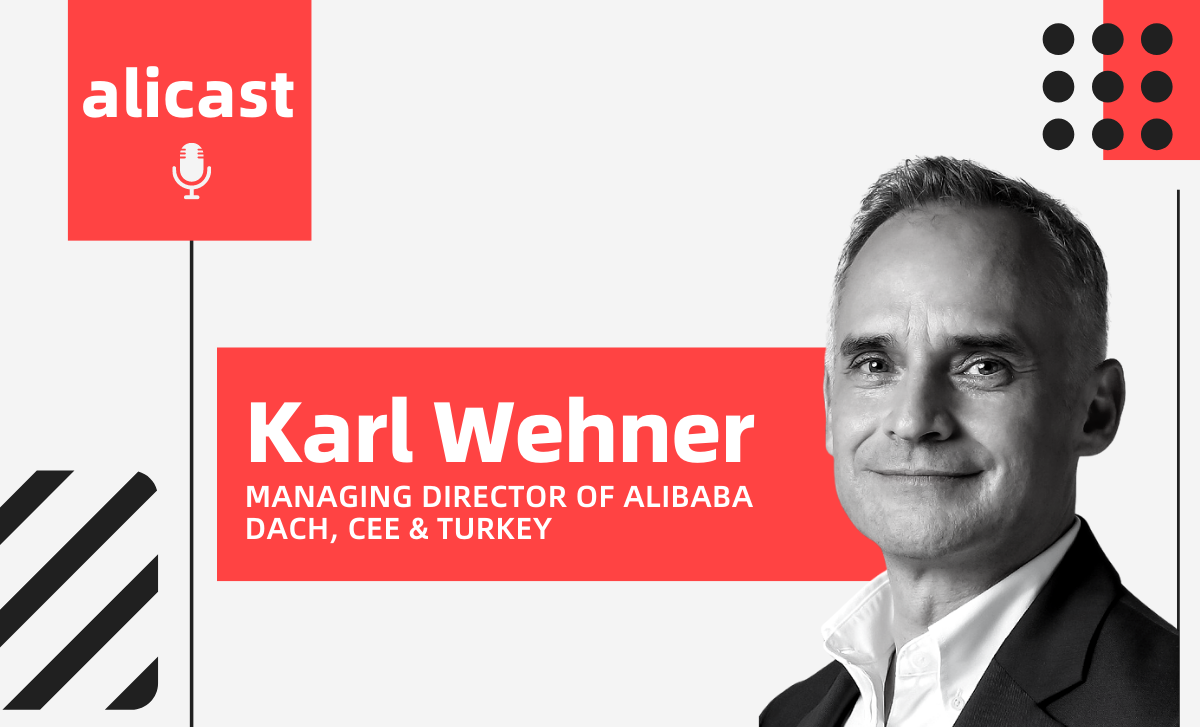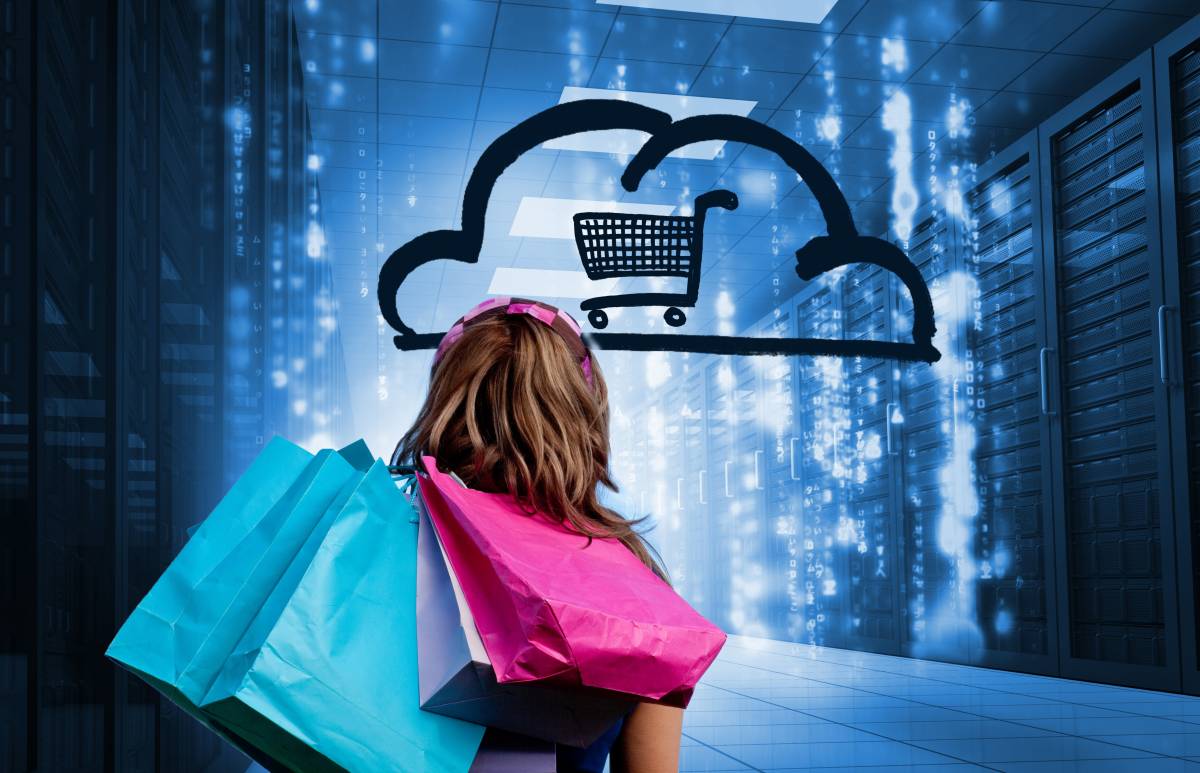
Podcast Open
You’re listening to Alicast, a deep dive into innovative and emerging trends in e-commerce, online payments and digital entertainment. Brought to you by Alibaba Group, we’ll offer insights about Chinese consumers and brands doing business in China. We’ll delve into global online, retail, cloud computing, big data and other must-know topics and issues in and around one of China’s largest companies. I’m Adam Najberg
Adam Najberg
2020 was a bad year globally because of Covid. This once-in-a-generation pandemic shut down economies upended lives and put unparalleled stress on companies, families and individuals. The retail sector was particularly hard hit. With lockdowns in place, foot traffic to stores around the world, just dried up. But the news wasn’t all bad for the retail sector. Because of lockdowns consumer habits changed, they moved increasingly online giving a boost to e-commerce. And there were some bright spots. China was hit early by Covid and began its economic recovery earlier than other countries. That was a boon to brands across the world. We’re going to talk about that today with Karl Wehner of Alibaba. Karl, apart from being a colleague, is a managing director. He’s responsible for a huge swath of Alibaba’s business across Europe’s German-speaking countries, Central and Eastern Europe and Turkey. Karl, let me start by asking you to sum up what you experienced and what you heard from German brands in early 2020, when it was clear that this virus was going to be a real problem. What was the situation like on the ground for them?
Karl Wehner
In the first lockdown, it was harsh. Shops closed, restaurants closed, people couldn’t go out in the streets, there was no travel. And so, basically, life stood still and so did many businesses. For example, German chocolate maker, Lauenstein lost a lot of business they had with the airlines, where chocolates are handed out. Also, friends and family gatherings became impossible, which is another strong driver of their business, which is gifting.
AN
Karl, if memory serves, you spoke with Maximilian Koaub at Lauenstein. Let’s hear what he had to say.
Maximilian Kaub
What changed was that there was no more occasions, because everything was closed, the restaurants are closed, you’re not allowed to have large gatherings. So obviously, there’s no intention to bring a gift. So we’ve seen a transformation from people actually physically buying gifts then to, to buying them online and also sending them online. That was a big change that we that we experienced. But I think what the whole the whole shutdown affected quite a lot was our supply chain, in terms of raw materials, in terms of cartonage, taking a lot longer to receive the goods, so we need to do a lot more planning ahead. And department stores were closed. This is one of our biggest clients. Obviously, there’s not a lot of air traffic going on at the moment. We had shops in airports. So they have no frequency basically. It’s a difficult time. But luckily, in China the exports picked up again. Also, e-commerce is booming at the moment. So we’re taking a hit. But we are managing.
KW
That’s really interesting. It was good that China came quickly out of the pandemic and consumption picked up again. And the demand picked up again as well for German products.
AN
A lot of German companies and brands had to scale back or shut down operations. And they lost business from that. Was this limited to any specific sector? Or was it very broad? Could you talk a little bit about one or two examples that when you
KW
Look at which businesses or which categories did well or didn’t do so well. It’s obvious that the FMCG, drugstores, pharmacies and online sellers did well during the pandemic. Many of these sellers were system-relevant and remained open to the public. When I talked to Sebastian Kebbe from medical products company, Beurer, he told me that the demand for thermometers and oximeters skyrocketed when the crisis started. They were pulling inventory from all over the world, but still weren’t able to satisfy the demand. In the very beginning, companies like Beurer actually saw a spike in demand and in business during the pandemic.
AN
Let’s take a listen to what he had to say.
Sebastien Kebbe
Yes, yes, indeed. Our products experienced extreme increases in demand during the crisis. So, we had massive sales increases in, for sure, clinical thermometers, pulse oximeters. The demand shot up in the pandemic from, let’s say, you could say, within hours, at the beginning of the crisis, which I perfectly remember was the beginning of January and February 2020. We gathered stock from every warehouse around the world and still could not fully cover the demand, which was rising in the market. Since that, our product mix has significantly changed in favor of medical products, since the start of the pandemic crisis.
AN
Karl, I don’t mean to sound offensive here, but that sounds extremely flexible. And that’s not a word that I typically think about with German companies. I think of them as being high quality, precise, efficient. Is there something about a crisis like this that has made them more innovative, more flexible than they were before? And is that change becoming fundamental now? Or was it just situational?
KW
With the second lockdown, we saw a lot of creativity and adaptation to digital channels. Digital transformation literally experienced a boost in Germany in comparison to previous years. If you look at some of the numbers, e-commerce in total, in the year of the pandemic, grew 15%. year-on-year, there was also a shift in demographics. So, users in 2019, at the age of 60, plus online shoppers in the previous year, the share was 25%. During the pandemic that grew to 33%. A lot of things have changed. And a lot of solutions, like “click-and-collects” were established, you know, where even department stores allowed consumers to order online, by email, by phone and pick up at a pickup window in front of their store. A lot of things changed, a lot of things were adopted, but also, many companies considered opening or expanding their exports internationally to China, because China was the country where the pandemic lasted for a short amount of time and consumption picked up quite quickly. Again, this in turn, also spurred the local digital transformation. The learnings made in China from German companies were also used over here. And one example is livestreaming, which for German companies and brands already in China has been a success. When I talked to Sebastian Kebbe from Beurer, he told me that their experience in China led them to adopt marketing mechanisms in consumer communications, such as livestreaming for their business.
AN
And I’d like to hear exactly what he had to say.
SK
I think livestreaming is definitely the way to attract Chinese consumers to a product, to to a brand, as a fan. And the Chinese consumers have, from our point of view, a significantly higher, or let’s say different, need to receive information about a product, about a brand. That information has to come from a trustworthy source. And it has to be presented in a way that is easy to consume. And livestreaming is the perfect tool for this. Among other actions, we streamed four hours live from Ulm, as a part of the 11.11 activities, with a tour of the city, interviews with people from our country, inside into the offices and places where the products are created. It was areally great and exciting event. And I think that’s how you create trust in us in our product. And that’s what it’s all about.
AN
Karl, another word I always think about with German companies is “pragmatic.” If it works, you keep doing it. And this clearly sounds like something that is working for Beurer and probably is going to work for other German companies as well. Do you think that this learning is going to lead to a permanent shift and a change in the way that German brands do business in China? How do we know if that’s the case? What is it, that time will tell? Or are you hearing things from them already,
Unknown Speaker
the pandemic led to a boost in digital transformation and the experiences made in China are a proof of concept that sets a new standard occur.
Unknown Speaker
We know that German brands pivoted to China as one way to find a new and growing market for their business in bad times. And so far, it seems to have worked and continues to work on the other side of it as Alibaba. What do we know? German companies are not unknown to Chinese consumers. They’ve been buying German brands for years. How do Chinese view German products and brands?
KW
Well, one thing hasn’t changed. “Made in Germany” is a quality seal for perfection, discipline in production that leads to safety, with a great heritage. When you look at what happened at our last global shopping festival, we actually expanded the event from 24 hours to many separate events across 11 days at Alibaba. Why did we do that? We basically wanted to allow many more brands to participate. You can’t pack everything in 24 hours at the scale and at the magnitude that we’re operating this global shopping festival. As a result, more than 1,300 German brands participated and generated over a billion U.S. dollars in gross merchandise volume. And that shows that the demand is not going to stop for German high-quality products.
AN
Obviously, a common theme for a lot of German brands was that they reached Chinese consumers. And you know, as we’re talking about this, they reach them through Alibaba in large part and our ecosystem and platforms. What kind of feedback are you getting from the brands and the companies in Germany about what it was like to work with Alibaba?
KW
What we hear most is how different Alibaba is, and how different the Chinese market is. When you look at our role as Alibaba we accompany the sellers and brands on this journey. If you’re expanding into a new market, it’s never easy. Expanding into a market where your target audience is very different than what you’re used to in your local markets where the digital transformation is “mobile only” versus “mobile first,” in many European countries, including Germany, there are a lot of things that you can do wrong. And we basically do not want to set up these companies for failure. Our role is to help them guide them through this journey, and ensure that these companies also do their homework.
AN
One of the features that’s very special to Germany, and I know from having having lived in work there for a number of years, is it has a very deep mittelstand ethos, that you have these family-run, these midsized companies that really make up a large part of the economy. Now, it’s not hard for a large company, a large brand, to pivot to China. It’s a new market, they have the money to make the investment. It’s kind of natural for them to do this. How do you convince mittelstand companies? Or, how do you show mittelstand companies the way into China,
KW
The interest is there. When we talk about mittelstand in Germany, small and medium-sized businesses, more than 99% are small or medium-sized businesses. Of all businesses in Germany, they’re the backbone of the economy. In addition to that, just as an example, 85% of people starting to work, or doing an apprenticeship in a company are hired by SMBs. This is really an important segment. However, small and medium-sized businesses, when it comes to exports, only share a very small contribution in comparison with their GDP contribution in the local market. As I said, the interest is there. At Alibaba, we’ve worked over the past years and developed features, for instance, to more global or cross-border e-commerce platforms to make it easy for these smaller companies to join. We’re going to continue doing that. We want to help the small guys, help the hidden champions to leverage the huge demand in China.
AN
Is that the message to them? “We’re going to help you leverage the huge demand in China.” I mean, it’s such a different market and such a different way of doing business. As we’ve heard from a couple of different well-known brands, how do you onboard them and guide them through a completely different type of market,
KW
What is important is that the brand is interested in doing this. I don’t believe convincing someone to do something that they don’t want to do is going to be helpful. Luckily, the majority of brands see China as a huge opportunity. But they just don’t know how to approach it. And the Alibaba ecosystem really helps these companies, not only from a trade, but also from a payments or logistics point of view. We’ve got solutions that are in place that these companies can use. One thing that is important when we help and guide these small and medium-sized companies is really the awareness of what is the Chinese consumer about. What are the differences in behavior? I’m speaking about everything is mobile. And then, of course, a brand heritage means a lot in the local market, and it means a lot in China, but they have to actually communicate it. That’s one big point that companies feed back to us. And that is we were not aware that we have to actually communicate why our brand is so special
AN
Because in Germany it’s so special and well known already, right? But it almost seems like a match made in heaven. I was talking to a couple of brands, one of them does, cosmetics and the the accessories that go with cosmetics, the brushes and the sponges, and they said Chinese consumers will ask questions in live streams to the executives like, “how many bristles are in your brush?” And the thing is, sometimes I feel as if it’s probably only an executive at a German company that would know the answer to that.
KW
It has a lot to do with trust. If you’re a brand that is not well-known in China, you have to explain why you’ve been in business for over 100 years. The Chinese consumer is very inquisitive and wants to find out all the details. And that’s also a very different approach. Because if you look at the Western world, when brands sell online, the main purpose is to get people to click on the buy button and check out really quickly. But in China, you do get the question, “is the person in the picture, is that an actor or is that a founder?” The Chinese consumer seeks authenticity. That’s something that German brands really have to share. And we help them understand and wrap their head around this new target audience, which is younger, which is highly interested in the brands, but shops in a very different way.
AN
It sounds to me like for the short term, China was a great outlet during Covid for German companies to keep product flowing. And it also turned out to open up a new market for them. Do you have a sense when you talk to the brands, that they’re in China for the long haul, because you always hear that if you’re just sweeping into China for a quick buck, forget about it. Are the German brands ready to make investments and stay and grow in China?
KW
China has become Germany’s largest trade partner. The ways that we empower small and medium-sized businesses and brands to reach the Chinese consumer are also going to get better. And the middle class in China will soon hit half a billion people. This is a market that you can’t neglect. This is a market that you have to consider, if you have a product that consumers around the world are interested in buying. One example over here is the company Beurer. They are hiring, investing and continuing their planning with China as one of the growth markets, one of the most important growth markets for them.
AN
All right, let’s go back to Sebastian Kebbe of Beurer and hear what he had to say.
SK
China is is one of our markets of the future. We are continuously expanding our subsidiary in Shanghai, and I think I had just in December, I would say, five to six job interviews, online job interviews with a new candidate for a subsidiary in China. So we want to grow in China with China, or we want to grow with China in China. I think that’s one of our top goals or top objectives for the next coming years.
AN
But I guess that answers my question about the importance of China in the long term. And it is clearly is a priority for German brands.
KW
Absolutely. If you look at the results of last year’s global shopping festival, the numbers speak for themselves. A billion U.S. dollars in GMV generated by over 1,300 brands from Germany, China being Germany’s largest trade partner. Now, actually even the largest trade partner for the EU. This is not going to go away. The demand is going to increase.
AN
Well, Carl, you’ve made it very easy to talk about German brands operating in China. It was a pleasure to get your insights. I want to thank you for being on Alicast.
KW
Thank you Adam was my pleasure, too!




